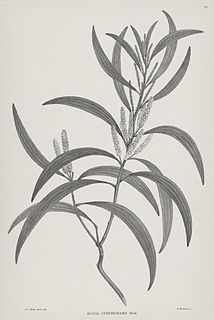 W
WBanks' Florilegium is a collection of copperplate engravings of plants collected by Sir Joseph Banks and Daniel Solander while they accompanied Captain James Cook on his voyage around the world between 1768 and 1771. They collected plants in Madeira, Brazil, Tierra del Fuego, the Society Islands, New Zealand, Australia and Java. During this voyage, Banks and Solander collected nearly 30,000 dried specimens, eventually leading to the description of 110 new genera and 1300 new species, which increased the known flora of the world by 25 per cent.
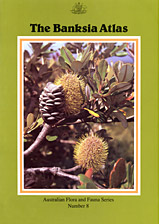 W
WThe Banksia Atlas is an atlas that documents the ranges, habitats and growth forms of various species and other subgeneric taxa of Banksia, an iconic Australian wildflower genus. First published in 1988, it was the result of a three-year nationwide program involving over 400 amateur and professional volunteers.
 W
WThe genus Banksia L.f. (Proteaceae) is a 1981 monograph by Alex George on the taxonomy of the plant genus Banksia. Published by the Western Australian Herbarium as Nuytsia 3(3), it presented George's taxonomic arrangement of Banksia, the first major taxonomic revision of the genus since George Bentham published his arrangement in Flora Australiensis in 1870.
 W
WFlora Australiensis: a description of the plants of the Australian Territory, more commonly referred to as Flora Australiensis, and also known by its standard abbreviation Fl. Austral., is a seven-volume flora of Australia published between 1863 and 1878 by George Bentham, with the assistance of Ferdinand von Mueller. It was one of the famous Kew series of colonial floras, and the first flora of any large continental area that had ever been finished. In total the flora included descriptions of 8125 species.
 W
WFlora of Australia is a 59 volume series describing the vascular plants, bryophytes and lichens present in Australia and its external territories. The series is published by the Australian Biological Resources Study who estimate that the series when complete will describe over 20 000 plant species. It was orchestrated by Alison McCusker.
 W
WFragmenta phytographiae Australiae is a series of papers written by the Victorian Government botanist Ferdinand von Mueller in which he published many of his approximately 2000 descriptions of new taxa of Australian plants. The papers were issued in 94 parts between 1858 and 1882 and published in 11 volumes. Though a 12th volume was apparently planned, it was not published. It is the only scientific journal in Australia that has been completely written in Latin.
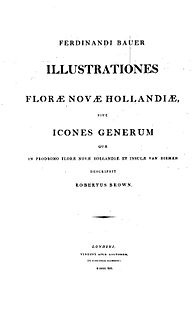 W
WIllustrationes florae Novae Hollandiae is an 1813 publication by the botanical illustrator Ferdinand Bauer.
 W
WThe Mammals of Australia is a three-volume work written and published by John Gould between 1845–63. It contains 182 illustrations by the author and its artist H. C. Richter. It was intended to be a complete survey of the novel species of mammals, such as the marsupials, discovered in the colonies of Australia.
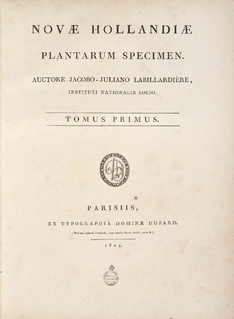 W
WNovae Hollandiae Plantarum Specimen is a two-volume work describing the flora of Australia. Facsimiles of the originals can be found in the online Biodiversity Heritage Library (Vol.1) and Vol 2).
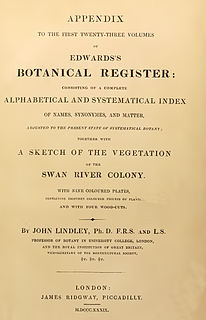 W
W"A Sketch of the Vegetation of the Swan River Colony", also known by its standard botanical abbreviation Sketch Veg. Swan R., is an 1839 article by John Lindley on the flora of the Swan River Colony. Nearly 300 new species were published in it, many of which are still current.
 W
WSnake Bitten is a book written by Kevin Markwell and Nancy Cushing. The book, with interviews from staff and supporters, is a biography of Eric Worrell who established the Australian Reptile Park in 1959.
 W
WA Specimen of the Botany of New Holland, also known by its standard abbreviation Spec. Bot. New Holland, was the first published book on the flora of Australia. Written by James Edward Smith and illustrated by James Sowerby, it was published by Sowerby in four parts between 1793 and 1795. It consists of 16 colour plates of paintings by Sowerby, mostly based on sketches by John White, and around 40 pages of accompanying text. It was presented as the first volume in a series, but no further volumes were released.
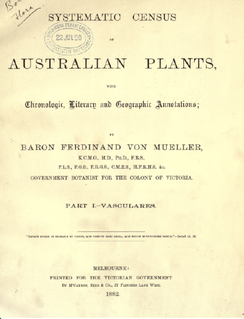 W
WThe Systematic census of Australian plants, with chronologic, literary and geographic annotations, more commonly known as the Systematic Census of Australian Plants, also known by its standard botanic abbreviation Syst. Census Austral. Pl., is a survey of the vascular flora of Australia prepared by Government botanist for the state of Victoria Ferdinand von Mueller and published in 1882.